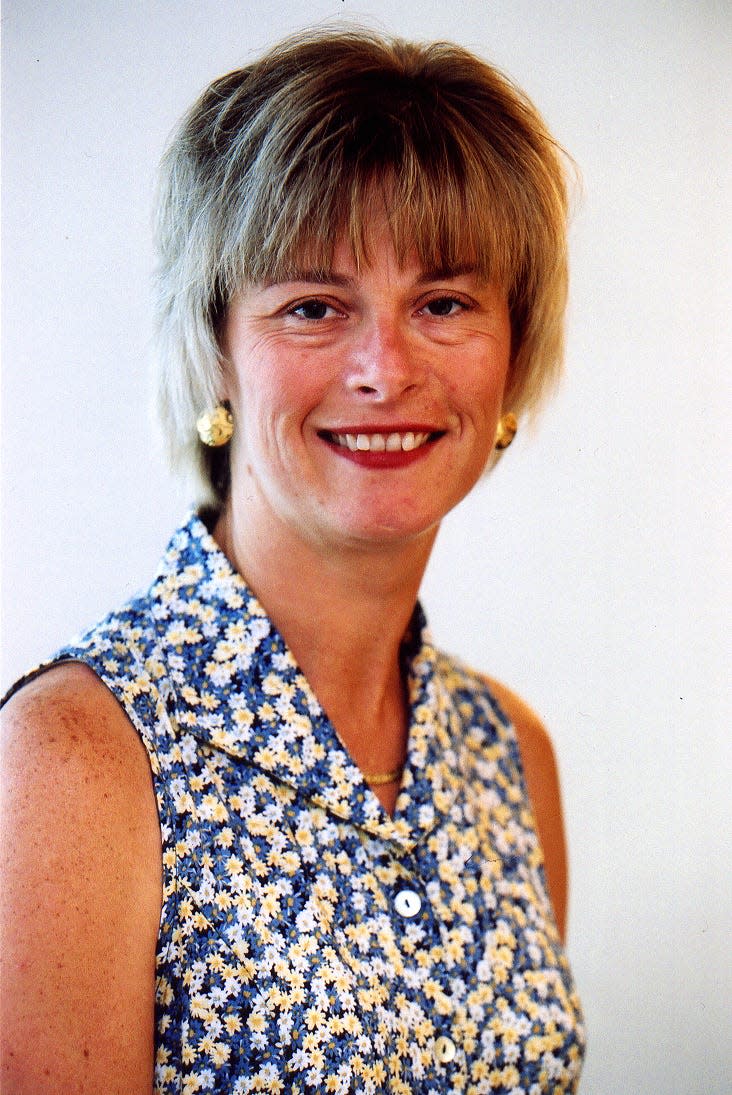What are the latest developments in breast cancer treatment? Central Mass. experts explain
WORCESTER — October is Breast Cancer Awareness Month, and the rate of breast cancer incidence for women in Massachusetts is higher than the national rate.
For every 100,000 women in the Bay State, 136 develop breast cancer, compared to 127 per 100,000 nationally, according to the National Cancer Institute. Those numbers cover a four-year period from 2016 to 2020.
As for breast cancer deaths, the rate is 16.1 per 100,000 in Massachusetts in 2020 for all races and ethnicities, according to the U.S. Centers for Disease Control and Prevention. That number is lower than the national death rate of 19 per 100,000 women.
Two Worcester doctors with decades of experience treating breast cancer patients shared their thoughts on recent developments in screening, diagnosis and treatment.
'Astonished'
That is the word Dr. Kathryn Edmiston, who has treated breast cancer patients at UMass Memorial Medical Center for 30 years and serves as director of that hospital's comprehensive breast cancer center, used to describe her reaction to changes in the breast cancer landscape over the past five years.

Edmiston noted the recommendation in May by the U.S. Preventive Services Task Force that women start getting mammograms at age 40 for early detection of the disease. For decades the recommendation was to start at age 50.
Other changes she cited include:
● Artificial Intelligence. It's creeping into many areas of life, and it’s potentially on the verge of entering the breast cancer screening realm. Dr. Gopal Vijayaraghavan, who practices diagnostic radiology and breast imaging at UMass Memorial, is researching the potential of using AI for reading mammograms, said Edmiston.
● If AI does make inroads, it would complement magnetic resonance imaging, used widely for years to screen women who have an elevated risk of breast cancer or family history of the disease.
● Computed tomography that uses specialized X-ray equipment is another screening tool that is potentially on the horizon. The benefit here, said Edmiston, is that a CT screen takes more detailed pictures that could lead to earlier detection in cases of potentially curable breast cancer.
3D screening
Two-dimensional methods were the standard for breast cancer screening. But today there is improved three-dimensional screening, said Dr. Kala Seetharaman, division director of hematology and oncology at St. Vincent Hospital. The advantage here is that 3D can identify small lesions in the breast, said Seetharaman.

Individualized treatment is also a recent development. It can include genetic analysis to determine who needs chemotherapy and who doesn't. Drugs that target specific cancer cells are also a weapon to fight the disease. Seetharaman noted Herceptin to target tumor cells.
Immunotherapy, said Seetharaman, is used to fight triple negative breast cancer, an aggressive form of the disease that strikes in 10% to 15% of cases.
"Breast cancer is not a death sentence anymore," said Seetharaman. "It's important for women to know that."
'Really extraordinary'
The recommendation for decades was to get chemotherapy after surgery to stop breast cancer from spreading to other parts of the body. Now there is a shift, said Edmiston, to a “biology-driven” approach in cases of early-stage breast cancer that hasn’t metastasized and is potentially curable.
Since 2011, a more personalized approach through the Oncotype Recurrence Score is used on women whose breast cancer is hormone-receptor positive and in its early stage. Edmiston explained this method analyzes 21 genes in cancer to determine if patients need both chemotherapy and anti-estrogen therapy.
“For early-stage breast cancer, it’s much less chemotherapy than 15 years ago, because there is personalized information on whether a patient benefits or not,” said Edmiston. “It’s really extraordinary.”
Edmiston also noted the development of CDK inhibitors first approved by the U.S. Food and Drug Administration in 2015. The drugs stop cancer cells from spreading, and Edmiston said women with high-risk hormone-sensitive breast cancer can take the inhibitor abemaciclib (brand name Verzenio). Combined with chemotherapy, the treatment reduces the risk of cancer returning.
In cases of hormone receptor-negative breast cancer, Edmiston said clinical trials indicate immunotherapy combined with chemotherapy can cut the risk of disease recurrence. Immunotherapy uses substances made by the body or in a laboratory to boost the immune system and help the body destroy cancer cells.
No guarantees
Despite the medical advances, there are no guarantees the disease is kept in check. “Breast cancer can still return in the bones, the lungs, the liver. It can recur for years after diagnosis,” said Edmiston.
She explained metastatic breast cancer represents 5% of cases, and it’s “treatable, but not curable. But people are living longer and better.”
Living longer and better, said Edmiston, because of three CDK inhibitors for women with hormone receptor-positive breast cancer: palboclib (brand name, Ibrance), abemaciclib (brand name, Verzenio) and ribocilib (brand name Kisquali). The drugs combined with anti-estrogen therapy resulted in cancers shrinking, tolerable side effects and longer lifespans, according to Edmiston.
“A really remarkable development,” she said, when compared to the earlier regimen in place for years that focused solely on anti-estrogen therapy.
Blood tests that pinpoint areas where drugs can attack breast cancer is another development, said Edmiston. Called “personalized care,” she said it’s used in cases of hormone receptor-positive breast cancer: “It’s really remarkable. You’re treating breast cancer that may have a mutation in the gene to target with a specific drug.”
Race a factor
Edmiston noted these advancements in breast cancer screening and treatment are not race-specific. But race is a factor in breast cancer incidences in the U.S., especially for Black women.
They are 41% more likely to die of breast cancer than white women, and twice as likely to die if they are younger than age 50, according to the American Cancer Society. Breast cancer also surpassed lung cancer as the leading cause of cancer deaths among Black women. Last year, 6,800 Black women died from breast cancer, according to the American Cancer Society.
“The key here is early diagnosis and make certain there is no racial bias in the availability of screening and access to care,” said Edmiston. “Whether there are biological drivers in African American women, that has not been sorted out. But it needs to be a targeted population for early screening and diagnosis.”
In Massachusetts, the breast cancer age-adjusted incidence rates by race/ethnicity per 100,000 people from 2016 to 2020, according to the National Cancer Institute, with each corresponding U.S. rate, include:
● White: 461.3/461.9
● Black: 424.2/445.9
● Hispanic: 339.5/339.6
● Asian/Pacific Islander 288.1/290.3
● American Indian/Alaska Native 261.9/392.6
'Potentially a big problem'
Millions of women nationally can't afford follow-up breast cancer care.
A pending bill at the State House could address that challenge by making follow-up breast imaging and exams more affordable. Sponsors of the bill claim the federal Affordable Care Act made mammograms available to millions of patients at no out-of-pocket costs, but follow-up exams can cost hundreds of thousands of dollars.
“I don’t think it helps when you have an abnormal mammogram and you can’t afford follow-up. ... It’s potentially a big problem,” said Edmiston.
The office of State Sen. Michael Rush, D-West Roxbury, a bill sponsor, didn’t respond to a request for comment.
Contact Henry Schwan at henry.schwan@telegram.com. Follow him on X: @henrytelegram.
This article originally appeared on Telegram & Gazette: Breast cancer treatment is advancing. Here's what to know

